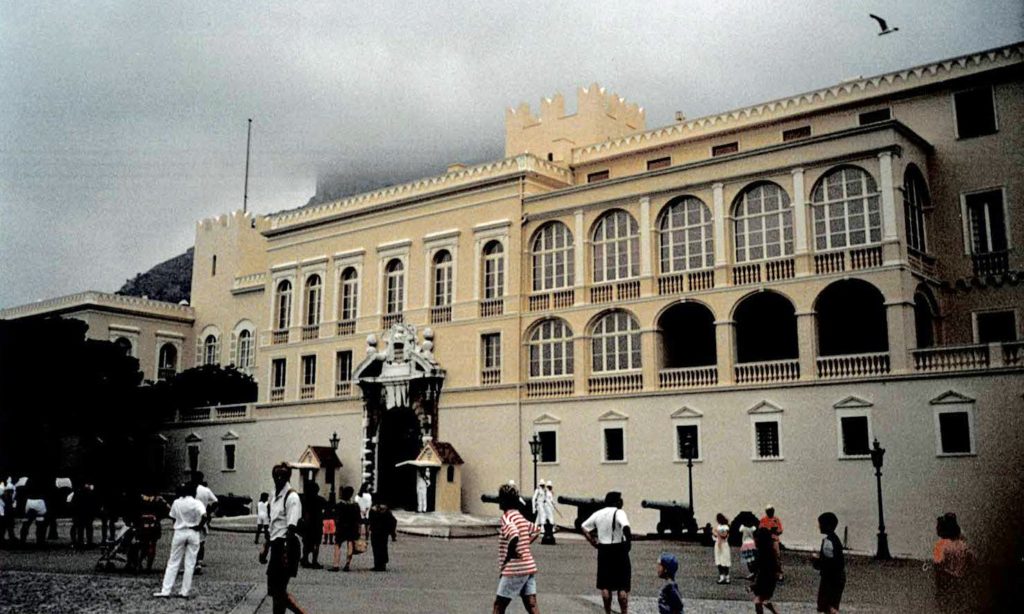
Monaco, with an area less than 500 acres, is the second smallest and most densely populated country in the world. The palace of its prince reflects its long and tumultuous history.
Monaco, located on the Mediterranean about nine miles west of the French border with Italy, is surrounded on three sides by France. For at least 2000 years, its natural harbor has made the area a center of Mediterranean trade. In 1191, Holy Roman Emperor Henry VI ceded the harbor and a promontory overlooking the Mediterranean called Rocher de Monaco (Rock of Monaco) to the Republic of Genoa, a nation of traders on the northwestern coast of Italy, on the condition that it construct a fortress to combat piracy. Beginning in 1215, the Genoese began building a fortress on the Rocher de Monaco. In the thirteenth century, the important families of Genoa split over whether they owed allegiance to the Pope or to the Holy Roman Emperor. The Grimaldi family, which sided with the Pope, was on the losing side and was banished from Genoa. At least according to legend, in 1297 a member of the Grimaldi family disguised himself as a monk and sought shelter in the fortress. Once inside, his supporters entered, captured the fortress and took control of Monaco. Whatever the truth of that story, the Grimaldi family has ruled Monaco, off and on, ever since.
Lacking additional space to build their palace, over the years the Grimaldi family added to the original Genoese fortress and eventually turned it into a palace rivaling the most elegant in Europe. Prince Rainier III, who ruled Monaco from 1949 until his death in 2005, restored the palace to its original splendor and opened it to the public. That practice has been continued by Prince Albert II, the son of Prince Rainier and Grace Kelly.